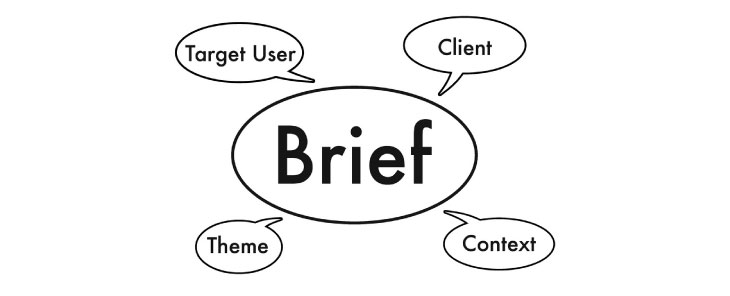Developing an Effective Logo Design Brief

This post was written with the client in mind, however may also prove to be a useful resource for other designers.
To develop an effective brand identity for your business it is essential that you are proactively involved in the process from the start. A designer can’t possibly hope to design an effective logo without your input, which is why the very first step in a logo design process should always be the development of a detailed design brief.
The risk of not completing a detailed brief is the possibility that your organisation ends up with a half-baked identity, that is not representative of who you are.
While the brief does not completely mitigate that risk – it at least provides a solid platform to work from, and ensures that both you and the designer are on the same page.
Inside the Design Brief
Below I have outlined some of the questions you can expect to be included in a typical design brief, along with some advice to help you get prepared.
Company Profile Related
Sample Questions:
Please describe your company and what it does? What is your company name, and the exact wording you would like used in the logo? What is your budget?
Advice:
- Provide as much information about your business as possible, including information about your background, current situation and where you want to be in the future. The description should be succinct, but detailed enough so the designer can really start to get a feel for what you represent.
- Always assume that the designer knows nothing about your organisation, even if you are well known, or have already discussed some of the details of the project with the designer over the phone or by email.
- Most designers will allocate time to the project based on what your budget is. Generally, the higher the budget, the more resources the designer will invest in your project, and the better the overall end result will be.
Competition/Audience Related
Questions:
Who is your target market? Who are your competitors? How do you differ from your competitors?
Advice:
- If possible, describe the specific demographics of your target audience, i.e. age, gender, geography, etc. List your audiences from primary to secondary to tertiary, etc.
- Provide website URLs to competitor sites. If your competitor does not have a website, try to provide photos or marketing collateral from competitors.
- Try to describe in detail what sets you apart from your competitors, e.g. price, location, service. This will help the designer identity your unique selling proposition.
Design Related
Sample Questions:
What message do you want your logo to convey to your audience? What style of logo do you prefer? Where will your logo primarily be used? What is the deadline for completion?
Advice:
- Think what you want your audience to think and feel when they see your logo. What is the impression it should leave in their mind.
- Give the designer examples of the type of logo that you feel may be appropriate for your business. This will give them an idea of your personal taste. While providing this information is important, try to stay open minded. If the designer is a professional they may advise of other design ideas that will work.
- While a well designed logo should be adaptable enough to be used across many mediums, it is a good idea to let the designer know the primary use for the logo. That way they can ensure that it will look the best where it matters most.
- Try to give the designer as much time as possible to complete the project. Rushed jobs (although sometimes unavoidable) often lead to mistakes and unsatisfactory outcomes. The time needed to complete the design will ultimately depend on the complexity of the job. Its best to be absolutely clear about your deadline in advance.
Conclusion
Filling out forms is never fun, however hopefully this article helps you understand why it is a necessary part of any identity design project.
If you have any advice, tips or feedback please leave them in the comments below.
###
Photo by Jordanhill School D&T Dept
For further updates please subscribe to our RSS feed and follow us on Twitter.